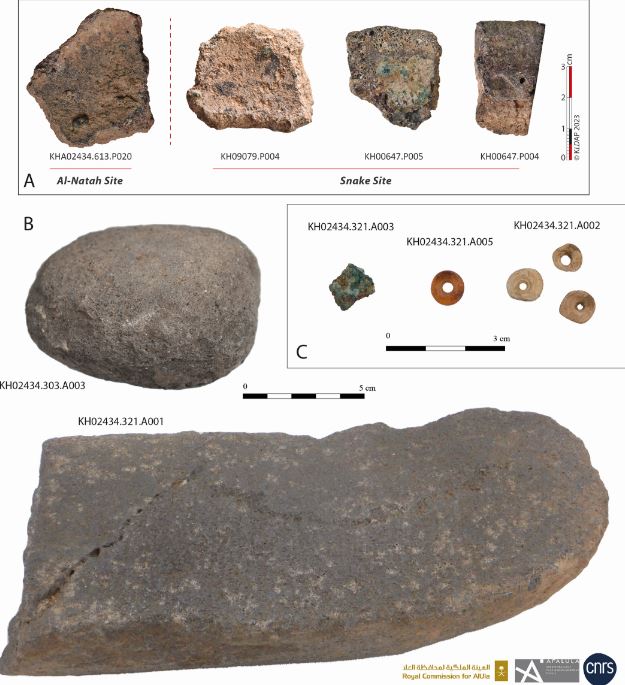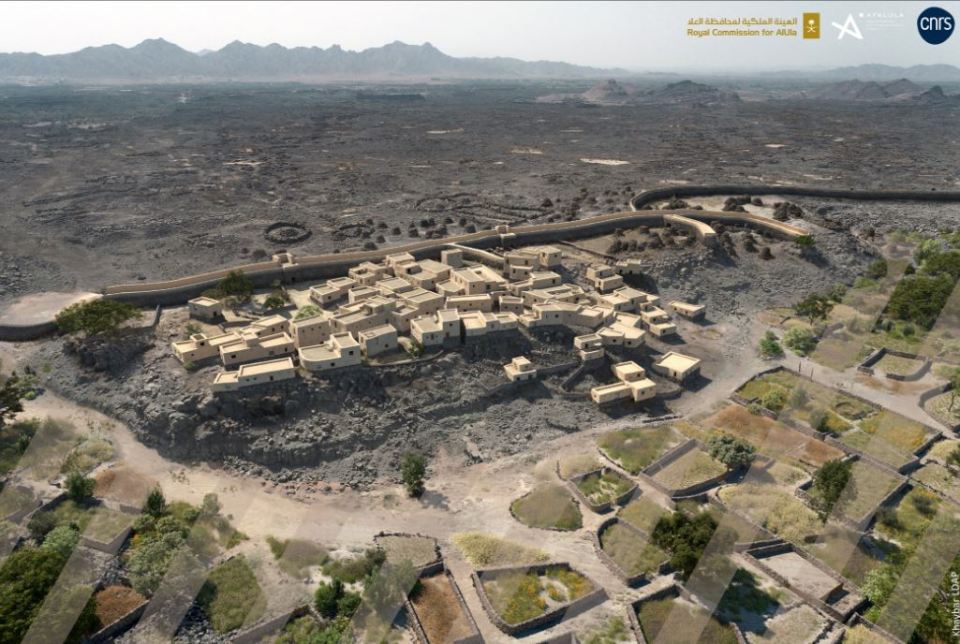Archaeologists uncover 4,000-year-old settlement in Saudi Arabian oasis scattered with pottery and precious stones

ARCHAEOLOGISTS have uncovered a 4,000-year-old settlement tucked away in a Saudi Arabian oasis.
The Bronze Age town, which is believed to have housed roughly 500 residents, sheds light on ancient societies transitioning from a nomadic lifestyle to a more urban one.
French archaeologist Guillaume Charloux, in collaboration with Saudi researchers, unearthed the al-Natah settlement near the Khaybar Oasis.
Researchers believe al-Natah, spanning roughly 2.6 hectares (6.4 acres), was built around 2400 BCE and remained inhabited until roughly 1300 BCE.
“Our findings suggest that the people of al-Natah engaged in a slower, region-specific process of urbanisation,” Charloux told AFP.
He noted the town's structure and stone barriers suggest that inhabitants were socially organised - more so than nomadic communities which traditionally dominated the area.
READ MORE ON ARCHAEOLOGY
Al-Natah would have been protected by the 9-mile-long (14.5 kilometers) wall that circles it.
The settlement was carefully planned, with a central administrative zone, a residential district with interconnected streets, walled gardens and a necropolis.
The necropolis contained circular stepped tower tombs and dozens of artefacts.
Archaeologists found daggers and axes, as well as pieces of pottery and precious stone rings made of agate, which were likely part of jewellery.
Most read in Science
The Khaybar Oasis is known for its fertile land despite it being located in a vast desert.
Though researchers have only found small traces of cereal grains, the town could have been a haven for agriculture.
Charloux also theorised that the "slow" urbanisation this small society underwent may have even supported early trade networks with other local groups.
In January, archaeologists found similar fortifications from the same period near the neighbouring Tayma Oasis.
It's unclear why al-Natah was eventually abandoned between 1500–1300 BCE.
“It’s a pertinent question that we can’t answer at the moment,” Charloux said, adding that there is still extensive work required.
What was the Bronze Age?
Here's what you should know...
- The Bronze Age was the period of time between the Stone Age and the Iron Age
- It is characterised by the common use of bronze at the time and also the start of some urban civilisations
- Flint was replaced by bronze for tools and weapons
- In Europe, the Bronze Age occurred from around 3200 to 600 BC
- During this time period, ancient empires started to trade luxury goods
- Bronze tools helped develop city building
- Metalworks, farmers and other craftspeople would come together in cities to trade goods
- With stronger weapons, came larger-scale wars and battles not seen before this time period
- The wheel and the ox-drawn plow were invented which helped farming flourish
- Bronze Age Britons ate cattle, sheep, pigs and deer, as well as shellfish and birds
- In the wetlands, they hunted wildfowl and collected reeds for building the roofs of their roundhouses
- The first forms of writing were developed by some civilisations












